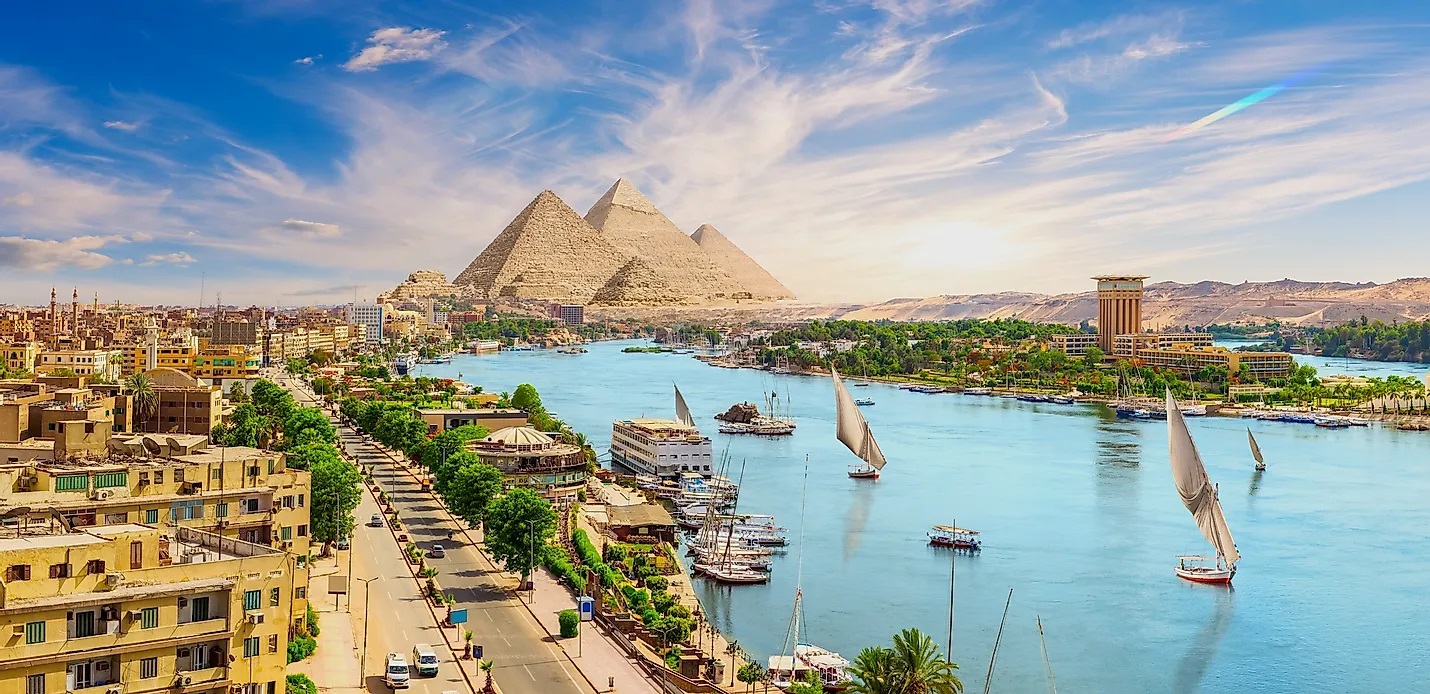The Nile River, one of the world’s most renowned waterways, has played a pivotal role in shaping the civilization of Egypt for millennia. From ancient times to the present day, this majestic river has been the lifeblood of the region, providing water, fertile soil, and transportation. In this article, we will explore the significance of the Nile River in both ancient and modern Egypt, delving into its historical and cultural impact on the land and its people.
In ancient Egypt, the Nile River held immense importance and was venerated as a deity. Its annual flooding brought life-giving waters and fertile silt, enabling the Egyptians to cultivate their crops and thrive agriculturally. The predictable flooding patterns allowed for efficient agricultural planning, leading to surplus production that sustained the civilization.
The Nile also facilitated transportation and trade, acting as a vital artery connecting various regions of ancient Egypt. Boats and barges carried people, goods, and ideas up and down the river, fostering cultural exchange and economic growth. The Nile was a source of inspiration for art, literature, and religious beliefs, with the annual flooding symbolizing renewal and rebirth.
Monuments and cities were strategically built along the riverbanks, including the magnificent temples of Karnak and Luxor, the iconic Sphinx and Pyramids of Giza, and the ancient city of Thebes (modern-day Luxor). These architectural wonders stand as testaments to the significance of the Nile in ancient Egyptian civilization.
In modern Egypt, the Nile River continues to be of paramount importance. It remains a vital water source, supplying freshwater for drinking, irrigation, and hydroelectric power generation. The Aswan High Dam, constructed in the 1960s, tamed the river’s flow, allowing for better flood control and harnessing its energy potential.
The Nile Delta, where the river meets the Mediterranean Sea, is a densely populated and agriculturally productive region. The fertile soil and water resources support a variety of crops, including cotton, rice, and citrus fruits. Agriculture remains a significant sector of the Egyptian economy, with the Nile’s waters irrigating vast farmlands.
Moreover, the Nile River serves as a transportation lifeline in modern times. Cargo ships navigate its waters, transporting goods to and from various ports along its course. The river also provides a means of transportation for locals and tourists alike, with traditional feluccas and modern cruise ships offering scenic journeys and leisure activities.
Egypt’s rich history and cultural heritage, deeply intertwined with the Nile, continue to attract visitors from around the world. The temples and ruins along the riverbanks, such as Abu Simbel and Philae Temple, stand as reminders of ancient glory and attract countless tourists each year. The Nile’s allure extends beyond archaeology, as many resorts and hotels offer breath-taking views of the river, enhancing the tourism industry.
Despite the Nile River’s significance, it faces numerous challenges in modern times. Population growth, industrialization, and agricultural demands place increasing pressure on the river’s resources. Pollution, including agricultural runoff and untreated sewage, threatens the water quality and ecosystem health. Climate change presents additional risks, potentially impacting the river’s flow patterns and exacerbating water scarcity issues.
Recognizing the importance of preserving this invaluable resource, the Egyptian government and international organizations have undertaken various conservation efforts. Water management projects aim to improve irrigation techniques, reduce waste, and promote sustainable agricultural practices. Additionally, initiatives focus on raising awareness about the importance of preserving the Nile and implementing measures to protect its ecological balance.
The Nile River stands as a testament to the enduring power of nature and the indomitable spirit of the Egyptian people. From ancient times to the modern era, this mighty river has shaped Egypt’s civilization, providing water, fertile soil, and transportation. It has witnessed the rise and fall of pharaohs, the construction of monumental architecture, and the evolution of a vibrant society.
In modern Egypt, the Nile remains a lifeline, supplying water, supporting agriculture, facilitating transportation, and driving tourism. However, the river faces challenges that necessitate sustainable practices and conservation efforts. Preserving the Nile’s ecological integrity and ensuring its continued role in Egypt’s development is crucial for the nation’s future.
As the Nile River continues to flow through Egypt, it will forever be a symbol of the country’s rich history, cultural heritage, and resilience. The Nile remains an everlasting thread connecting ancient and modern Egypt, reminding us of the enduring power of nature and the river’s profound influence on the land and its people.




Comment (0)